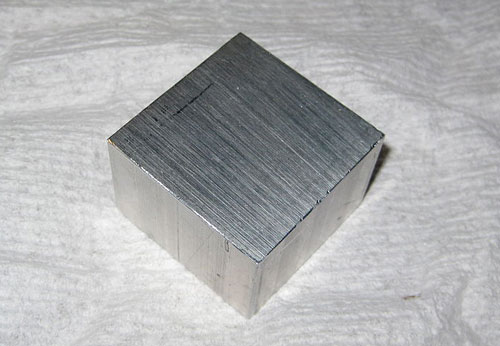Fagerhult has announced that its extruded aluminium profiles for its high-volume product lines now contain 75 per cent recycled material.
Product lines making the switch include Notor 65, Notor Recessed, Notor 36, Fjord, Vil, Multilume Hydro, and Sentra.
The initiative reduces the company’s climate footprint by approximately 225 tons of equivalent carbon dioxide per year.
This results, says Fagerhult, in around 70 per cent lower climate impact than the average impact from European primary aluminium and 88 per cent lower than the global average for primary aluminium.
‘We’re taking a significant step forward by moving from renewably sourced aluminium to recycled post-consumer aluminium,’ Niclas Thulin, sustainability manager at Fagerhult, told the Circular Lighting Report.
‘We intentionally upgrade the materials for our larger product series because it significantly impacts Fagerhult’s greenhouse gas emissions. For the Notor family alone, we used approximately 65 kilometres of aluminium profiles in 2024, and nearly all of this volume has now been replaced with recycled material.
‘This is our most important decision regarding materials, at least with reduced climate impact as the fundamental incentive. The majority of our emissions come from Scope 3, and through this change, we are making a difference where it has the greatest impact. Based on last year’s volumes, the switch to recycled aluminium can reduce emissions by approximately 225 tons of carbon dioxide equivalents annually.’
The change is part of Fagerhult’s systematic sustainability work and a considerable step in reducing greenhouse gas emissions in Scope 3: the company’s indirect emissions from purchased materials. The Science Based Targets validate Fagerhult’s climate targets, and the ambition is to achieve net zero emissions from the entire value chain by 2045.
Aluminium is a lightweight and durable material that can be reused multiple times if recycled properly. Its environmental impact depends on several factors, including whether it is made from virgin aluminium, how it is produced, whether fossil fuels or renewable energy sources were used in its production, and if it is derived from recycled materials.
Recycling aluminium is less expensive and energy-intensive than creating new aluminium, which is made by the electrolysis of aluminium oxide, which must first be mined from bauxite ore and then fired.
Last year rival brand Glamox has announced that it had started to switch from using virgin aluminium to recycled aluminium in its luminaires as standard.
• Learn more about sustainable lighting at Circular Lighting Live 2025, Recolight’s flagship conference and exhibition, which takes place on Thursday 25 September 2025 at the Minster Building in the City of London. Free to specifiers, Circular Lighting Live 2025 will feature leading experts, specifiers and policy makers who will share their insights into forthcoming standards and legislation, emerging technologies and new business models. More info: www.circularlighting.live

